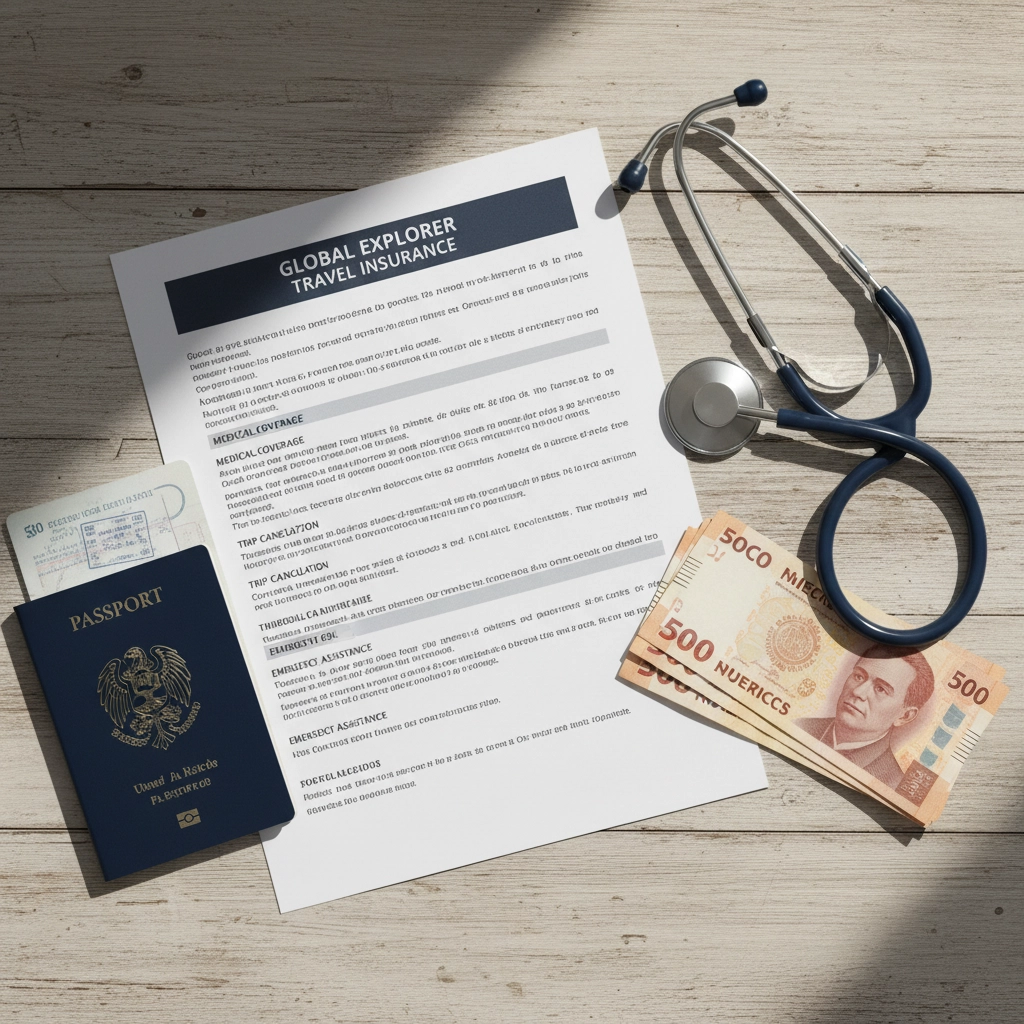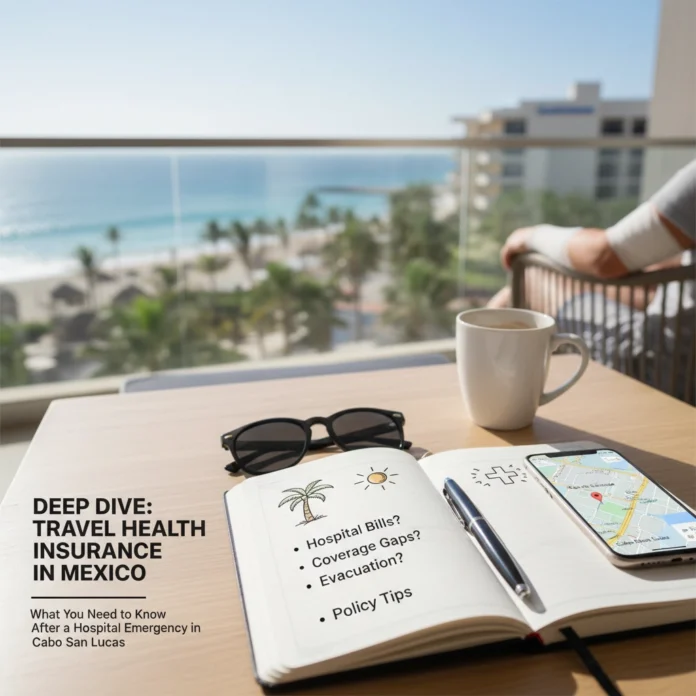Nothing quite prepares you for the shock of being handed a $10,000 hospital bill in a foreign country. That's exactly what happened to me during what was supposed to be a relaxing getaway to Cabo San Lucas this past July. One minute I was enjoying the beautiful beaches, and the next I found myself in Saint Luke's Hospital dealing with a medical emergency that opened my eyes to the harsh realities of international healthcare coverage.
Here's what I learned the hard way about travel health insurance in Mexico, and why you absolutely need it before your next trip south of the border.
The Reality Check: Medicare Won't Save You
Let me start with the biggest misconception many American travelers have – your regular health insurance probably won't help you in Mexico. I discovered this firsthand when Saint Luke's Hospital informed me that my Medicare coverage was essentially worthless outside the United States. Zero coverage. Nada.
Even Medicare supplements, which might offer some limited international coverage, still left me facing that intimidating $10,000 deposit requirement just to check out of the hospital. The financial reality hit harder than my actual medical emergency.

Mexico's healthcare system operates under the Instituto Mexicano de Seguro Social (IMSS), which exclusively serves Mexican citizens and legal residents who contribute to the system. As foreign visitors, we're completely on our own, relying entirely on private medical facilities that can charge whatever they deem appropriate.
Why Travel Health Insurance Isn't Optional in Mexico
After my Cabo experience, I can tell you with absolute certainty that travel health insurance for Mexico isn't a luxury – it's a necessity. The private healthcare system that tourists must use can be extraordinarily expensive, and hospitals often require substantial upfront payments before providing treatment.
The good news? Travel medical insurance is surprisingly affordable, often starting as low as $1 per day depending on your coverage limits and deductible choices. Compare that to the potential tens of thousands you might face without coverage, and it becomes a no-brainer investment.
Essential Coverage Components
When shopping for travel health insurance for Mexico, focus on these critical elements:
Comprehensive Medical Emergency Coverage: This should include hospitalization, surgery, urgent care, prescriptions, and medications. Don't skimp on coverage limits – experts recommend a minimum of $50,000, with higher amounts if you're visiting remote areas like some parts of Baja California.
Emergency Medical Evacuation: This might be the most crucial component. Quality policies can cover up to $500,000 in evacuation costs, including transportation to a hospital of your choice and even bringing a family member to join you. Given Cabo's somewhat isolated location, this coverage becomes essential for serious medical emergencies.

24/7 Support Services: Ensure your provider offers round-the-clock support with English-speaking operators who can help locate appropriate medical care and coordinate treatment. During my hospital stay, having someone who could communicate effectively with both the medical staff and insurance providers would have been invaluable.
The Saint Luke's Hospital Experience
Saint Luke's Hospital in Cabo San Lucas is actually one of the better medical facilities in the area, offering modern equipment and English-speaking staff. However, the billing process revealed the harsh financial realities of medical tourism gone wrong.
The facility required that substantial deposit before discharge, regardless of insurance status. This practice is common throughout Mexico's private healthcare system, as hospitals protect themselves against unpaid bills from foreign patients. Even with travel insurance, you might need to pay upfront and seek reimbursement later.
The hospital staff was professional and the care was adequate, but the administrative side focused heavily on payment arrangements. They made it clear that without proper travel insurance or significant cash reserves, obtaining care could become complicated quickly.
Getting Home: Emergency Evacuation Options
One aspect I hadn't fully considered was how to get home if my medical situation had been more serious. Emergency medical evacuation can cost anywhere from $25,000 to $100,000 or more, depending on your condition and destination.
Quality travel health insurance policies include medical evacuation coverage that can arrange and pay for transportation to a facility of your choice, often back in the United States. This isn't just about ambulance rides – we're talking about medical flights with specialized equipment and trained personnel.

Credit Card Programs: What American Express Actually Covers
Many travelers assume their premium credit cards provide adequate medical coverage abroad. American Express, for example, does offer some travel insurance benefits on certain cards, but the coverage is often limited and comes with significant restrictions.
Most credit card travel insurance programs focus primarily on trip cancellation and lost luggage rather than comprehensive medical coverage. Even when medical coverage is included, the limits are typically much lower than what you might need for a serious emergency in Mexico.
More importantly, credit card companies often advance money rather than directly pay providers, meaning you'll still need substantial cash or credit available to handle immediate medical expenses. They're not going to negotiate directly with Saint Luke's Hospital on your behalf.
Recommendations Based on Real Experience
After navigating this experience, here are my practical recommendations for anyone planning to travel to Mexico:
Purchase Standalone Travel Medical Insurance: Don't rely on your domestic health insurance or credit card benefits. Buy dedicated travel medical insurance with at least $100,000 in coverage and comprehensive evacuation benefits.
Verify Provider Networks: Some insurance companies maintain relationships with specific hospitals in popular destinations like Los Cabos. This can streamline treatment and reduce upfront payment requirements.
Consider High-Risk Activities: If you're planning activities like scuba diving, parasailing, or ATV tours – all popular in Cabo – make sure your policy doesn't exclude coverage for adventure sports.
Plan for Extended Stays: If you're staying longer than 90 days, standard travel medical plans won't cover you. Look into extended stay policies that can provide coverage for up to 180 days.

The Financial Reality
The cost difference between being insured and uninsured in Mexico's private healthcare system can be staggering. While travel medical insurance might cost $50-200 for a typical week-long trip, a single hospital stay can easily cost $10,000 or more.
During my stay at Saint Luke's, I met other American travelers who faced similar situations. One couple from Phoenix ended up paying over $15,000 out of pocket for what would have been a routine procedure back home, simply because they assumed their domestic insurance would provide some coverage.
Moving Forward: Don't Learn This Lesson the Hard Way
My unexpected medical emergency in Cabo San Lucas taught me that international travel without proper health insurance is essentially financial Russian roulette. Mexico's beautiful destinations and excellent weather make it a fantastic place to visit, but the healthcare system for tourists operates very differently from what most Americans expect.
The solution isn't to avoid traveling to Mexico – it's to travel smart with proper coverage. Spend the extra money on comprehensive travel health insurance, understand what your policy covers and excludes, and keep emergency contact information easily accessible.
Trust me, the peace of mind is worth every penny, and it might save you from facing a five-figure hospital bill when you're supposed to be relaxing on vacation.
Before your next trip to Mexico, take the time to research and purchase adequate travel health insurance. Your future self will thank you if you never need to use it – and you'll be incredibly grateful you have it if you do.
Story by Dan Kost. For more info or to share your story, contact dan.kost@gotravel.news.
#AEO #TravelHealth



